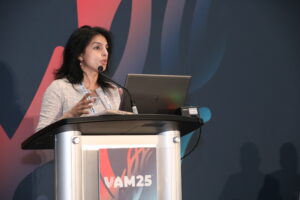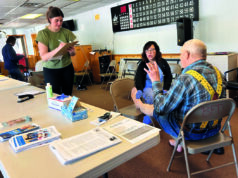
Transcatheter arterialization of deep veins (TADV) done without the coiling of venous outflow branches achieved sufficient distal perfusion after three months among “no-option” chronic limb-threatening ischemia (CLTI) patients, according to results from a study published in the Journal of Vascular Surgery (JVS).
TADV, also known as deep vein arterialization (DVA), is an emerging option for CLTI patients who can’t receive traditional revascularization techniques. Although the coiling of venous outflow branches is a common adjunct procedure to TADV, a lack of data has brought into question how critical coiling off venous outflow branches really is.
To investigate this question, researchers from Massachusetts General Hospital in Boston conducted a retrospective chart review on a cohort of “no-option” CLTI patients who had TADV performed using the LimFlow system (Inari Medical/Stryker) between 2020 and 2024. Flow volumes were assessed at one and three months via ultrasound measurements and clinical outcomes were evaluated at one year.
“The point of this particular study was we wanted to look at the coiling of the branches to see how important it is to actually go and coil off these branches in order to ensure that the DVA actually matures,” Anahita Dua, MD, a vascular surgeon at Massachusetts General Hospital and an author on the study, told Vascular Specialist. “What we found is that for a number of these branches, frankly, the majority of them, you do not have to coil off the branches and the circuit matures anyway.”
Data showed the patients who underwent TADV without venous branch coiling had an 87% limb salvage rate one year after the procedure. The patients also maintained a flow rate of 179.0 mL/min for three months at midstent, as well as a median decrease of 123 mL/min at one month.
“This is not a huge lift,” said Dua. “Most patients do not need you to go back in and shut down this vessel and shut down that vessel. You don’t have to be so paranoid about every single one.”
Dua said because TADV without venous branch coiling is a “one and done” procedure, it is more accessible to vascular teams—particularly those in lower resource settings. It also could accelerate use in the community, decrease costs and make patients more likely to have it done. “By decreasing the burden of the procedure, both on the provider and on the patient, you make it significantly more accessible across the board,” said Dua.
However, performing TADV without venous branch coiling does come with some risks. Dua said that by not coiling off some branches in the beginning that might be stealing blood, the TADV will not be able to strengthen. This could make the whole operation unsuccessful due to a lack of blood flow, resulting in an unproperly healed wound.
“It is important to ensure that if there are stealing branches that are significant, that they are managed,” said Dua. “It’s also important to recognize it’s not a hammer and everything is not a nail. You don’t have to do every single branch because you can get out of control that way. Being very careful and methodical about what you pick and when is key to the success of the procedure.”
During a session at the 2025 Vascular Annual Meeting (VAM) in June, Dua presented data from a study comparing “no-option” CLTI patients from the PROMISE studies treated with TADV to a cohort of patients from the CLariTI study who were treated using standard of care (SoC). Results from the prospective study showed patients who underwent TADV in the PROMISE cohort had a limb salvage rate of 82.2%, compared to 51.3% in the SoC CLariTI patient cohort.
Additional real-world outcomes data supporting TADV were also recently revealed at the 2025 annual meeting of the Eastern Vascular Society (EVS) in September. Those findings showed limb salvage rates of 71.7% one year after TADV among “no-option” CLTI patients, with a survival rate of 84.7%. Dua said based on all of the data, it’s clear that the procedure does work in the right patient.
“The next question is how do we make it better,” said Dua. “We know it works; patients are keeping their legs. We have to make it easy for providers to be able to do. Because unlike cancer, where a patient can get a bad cancer and they can travel to [MD Anderson Cancer Center] or they can go to [Memorial Sloan Kettering Cancer Center], that’s not the case for peripheral artery disease (PAD) and CLTI. In these patients, if they don’t get something locally, they are going to lose their leg. Being able to ensure that pretty much anybody with wire and catheter skills can do this procedure is important. That is what we all believe—that it’s something that can be done.”












